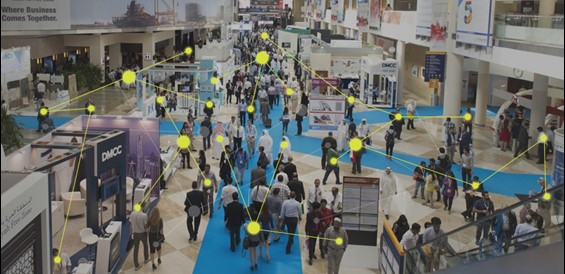Thursday Dec 8 2016
By Faye Black, Group Marketing Director, dmg events Middle East, Asia & Africa
 When you’re sitting at your desk planning an event that can be as much as two years away, the role technology might play on those few short and distant days can be tough to pin down. Part of the challenge is that as event marketers we are faced with new technologies appearing with a rapidly rising frequency. While we’re getting used to the hectic pace, it’s becoming harder to tell the difference between a temporarily trending app, designed by a tiny team and supported by no one, and the serious enterprise technologies that could genuinely change what we do.
When you’re sitting at your desk planning an event that can be as much as two years away, the role technology might play on those few short and distant days can be tough to pin down. Part of the challenge is that as event marketers we are faced with new technologies appearing with a rapidly rising frequency. While we’re getting used to the hectic pace, it’s becoming harder to tell the difference between a temporarily trending app, designed by a tiny team and supported by no one, and the serious enterprise technologies that could genuinely change what we do.
Clues can come from the market. There you can compare your own operation to what others in the industry are up to and see who’s doing it best. If you’re anything like me you’ll check out how technology events handle things, because surely they must be right on the pulse of what’s happening in the sector? It is easy to become overwhelmed and over-excited by all the choice, all the features and all the possibilities. But you’ll soon come crashing down to earth when you realise that products pitched as ‘easy and simple’ are never quite what they seem.
Whether it’s the astronomical cost, a total absence of any customisation options or a scruffy teenaged developer explaining that the module you need is ‘still in beta’, turning the kernel of a great idea into a pivotal part of your event can take herculean efforts. Along the way you might read articles where words like ‘engagement’, ‘amplification’ and ‘community’ are bandied about and worry you’re not keeping up with the crowd. Then, as the budget blows out and you find yourself in the middle of an integration war between different suppliers, you start to think just maybe things could have been easier. If only we had only stopped to think about what our audience actually wants.
I’m not saying that we shouldn’t adopt new technologies. In fact, I believe the very opposite. Technology enables attendees with very busy schedules to optimise their time spent at an event. Good technology can have a very measurable impact on an event’s performance. Research from consultant Frost & Sullivan showed that the right technologies can drive attendance up by as much as 20 per cent, while bringing booking costs down by 15 per cent. The same research suggested that introducing mobile technologies to your event’s audience can give a boost to sponsorship sales, cut some printing costs and, crucially, increase audience engagement by up to 33 per cent. Any engaged attendee who feels they have had a productive event is far more likely to share their experience and return. If your technology is quick and easy to access, works seamlessly and is genuinely fool proof then these benefits are yours for the taking. What more could we want?
Finding the answer comes down to thinking about your audience. You have to ask yourself questions about their demographics: How old are they? How tech savvy are they? It may be that they are from a group that prefers a business card and a firm grip to an e-handshake with a thumbnail-sized selfie. Maybe your audience feels more comfortable with an old fashioned fold out floor plan, rather than an interactive navigation experience. Either way, have we stopped to ask them?
In the emerging markets where dmg events operates it is vitally important that we do so. Across the Middle East and in many African regions, face-to-face interaction is critical to commercial success. It is a process that goes well beyond simply getting down to business, instead establishing trust and sowing the seeds of a fruitful relationship, a process we ourselves have been through as we launch established events in new markets. Moving to long-distance communication only becomes effective once that relationship is in place. While emerging market countries may lead World Bank league tables of mobile penetration and youthful populations, who are social media savvy and consume huge quantities of mobile video, those characteristics do not translate into the business world. There, the children of the digital age are having to meld themselves around the traditional practices of their parents, who like to meet potential business partners in the flesh, rather than in the pixel.
So, how do you bring these two worlds together? Easy, ask your audience. Understand their underlying needs and deploy technology accordingly. Don’t try to use every emerging idea all at once. Roll out those that offer the greatest value to you and your audience, get feedback, improve and introduce another feature. Find the right supplier, with a proactive account manager, and set clear goals in the service level agreement. Be prepared to roll your technology out with them for a few years and gradually introduce changes. The price of not getting it right may be measured in the revenues we lose if customers feel overwhelmed, inconvenienced or alienated. The rewards could be much greater, but they will only come with patience and planning.
At the end of the day, we’re human. Humans crave connectivity, not the tech type, but the person-to-person type. It’s through these connections that we gain real value and as event organisers that is what we should be aiming to deliver.






